Lwang Village is a charming village at an elevation of 1,550m that offers breathtaking views of the Machhapuchhre Himalayas. It falls under the Annapurna Conservation Area Project (ACAP) and is situated 20km North-West of Pokhara. Lwang is renowned for its organic Himalayan tea farming and is a starting point for the Mardi Himal trekking route. The villagers engage in various occupations, including tourism through homestay, military service, overseas employment, organic tea factory, and agriculture.
Organic Tea Garden in Lwang Village

During the Lwang Village tour, you can visit the Organic Tea Garden, which spans 71188 square feet and sits at 1600 meters. The garden is a 30-40 minute walk from the village and offers a breathtaking view of the villages and downtown Pokhara. The tea is processed in Lwang Village, and visitors can taste the organic Himalayan tea grown there. The village’s organic tea garden has enhanced its reputation, and the tea produced here is even exported to European countries such as Italy and Germany. If you’re interested, take a half-hour uphill walk from the homestays to visit the tea garden during your stay in Lwang Village.
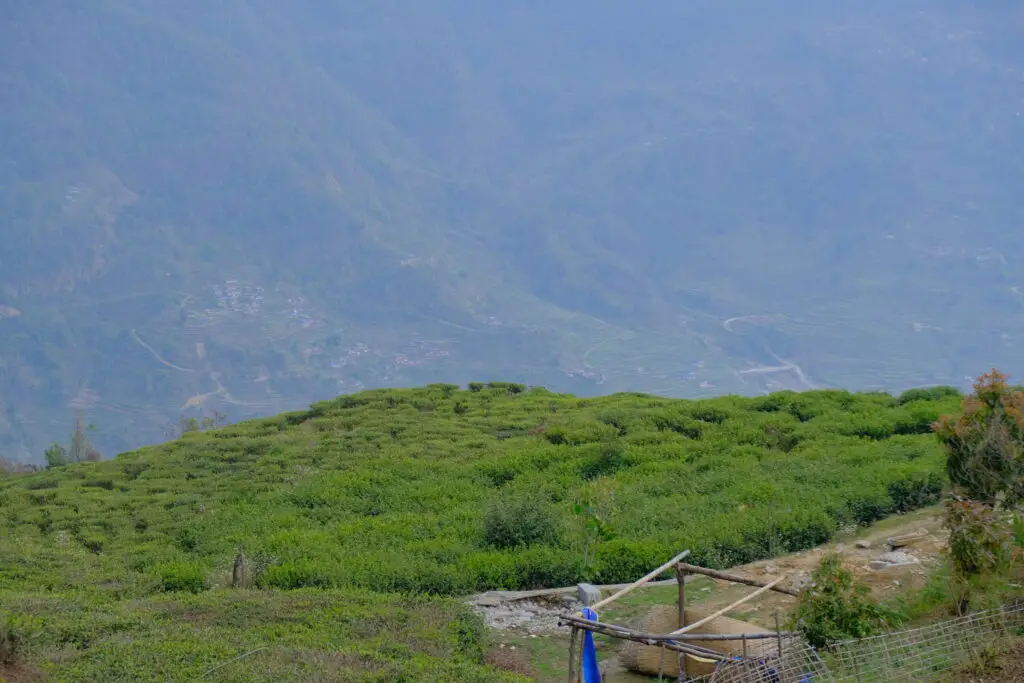
Other attractions and activities
On the outskirts of Lwang, Ghatte Khola has two large-scale 39 meters 70 meters, long waterfalls where visitors can do canyoning. You will visit this site. There are other things to see here, like a Buddhist monastery, chortens, Shiva Temple, etc.
Some other exciting activities you can participate in at the village are mingling with the locals to learn to churn yoghurt, butter, ghee, etc. You can also experience the tradition by putting on traditional dresses and doing some daily household chores of the villagers. In the evenings, you can rest in the isolated village’s peaceful environment, feeling blissful under the towering image of the Machapuchhare Himal and feeling the tranquillity of nature.
Eco-tourism
Lwang village has embraced eco-tourism, a way of tourism that does not harm the area’s natural balance and environmental cleanliness. The locals are committed to preserving their culture, traditions, and surroundings, so the village maintains a clean and hygienic environment while living traditionally. Lwang offers a rare opportunity to experience a thriving Gurung civilization that still lives as it did in ancient times and is easily accessible.
Home Stay and Prices
Lwang Village is well-known for its community-based homestay tourism, which began in 2009. There are 12 houses in the village that offer homestay facilities, all registered with the Ministry of Tourism in Nepal. These houses can accommodate up to 60-70 guests at a time and provide clean rooms equipped with basic amenities such as toilets, bathrooms, and hot & cold showers. The household mothers prepare delicious Nepali meals (including Dal, Bhat, and Organic Vegetables) and local chicken curry. If you drink alcohol, then there is local alcohol (rakshi) which is brewed from millet. Prices for local Homestay can cost from ten to fifty dollars depending on their services.
When is the best time to visit Lwang Village?
You can visit Lwang village all year round, but the best time to visit Lwang village is during the winter season, from November to February. The weather is cool and pleasant during this time, and the village is less crowded. It’s also the perfect time to witness the stunning beauty of the Himalayas and the area’s breathtaking landscapes. Avoid visiting the Lwang village between June and August because of the monsoon rain. During these months, there might be roadblocks and maintenance due to heavy rain.
Itinerary of Lwang Village Trek
- Day 1: Drive from Pokhara to Lwang village
Lwang village is located 26 kilometres northwest of Pokhara. You can drive an hour and a half from Pokhara until you reach Khoramukh, the midway between Lwang and Hemja. From there, take a 45-minute hike through the forest to reach Lwang village, situated at an altitude of 1,550 meters above sea level.
Rest comfortably at Lwang Village Homestay at night while enjoying the stunning view of Mt Machapuchara in the northeast. During your stay, you’ll be hosted by the welcoming Gurung family in one of the community-managed homestays. You’ll be treated to meals from their kitchen garden featuring seasonal fruits. Take part in the village walking and socialize with the friendly locals. - Day 2: Exploration of Lwang Village
Spend the night at Lwang Village Homestay. Rise early before sunrise to reach the viewpoint and witness the beautiful Himalayan sunrise. Following breakfast, enjoy a trip to the tea garden and canoeing site. Experience the everyday village life by attending cattle(only if you are interested) feeding and milking, yoghurt churning, and traditional cereal grinding for meal flour. Learn about local customs, traditions, and culture while assisting the ladies in preparing your meal. - Day 3: Return to Pokhara from Lwang Village
Locals will bid you farewell after breakfast by putting on tika and flower garlands. You can then enjoy scenic views of valleys and mountains as you drive back to Pokhara.
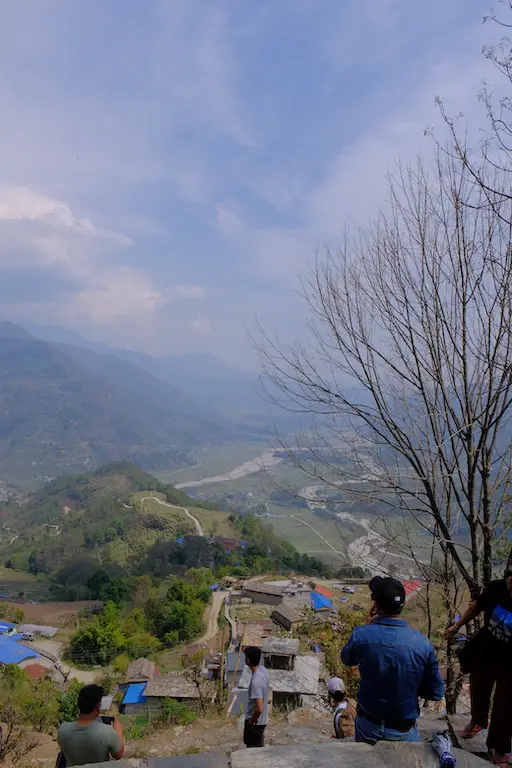
How to reach Lwang Village?
To get to Lwang village from Pokhara, the most popular transportation options are by bus, jeep, or local taxi. You can easily find a bus at the local bus stop, with multiple departures daily. To secure your spot, it’s recommended to check the schedule and book your ticket in advance. While a private car, jeep, or motorbike can also be hired, it’s a pricier option than the bus ride. The travel time is approximately 3-4 hours, depending on traffic.

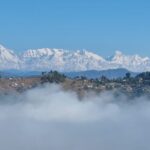
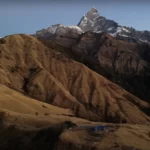
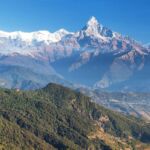

Leave a Reply